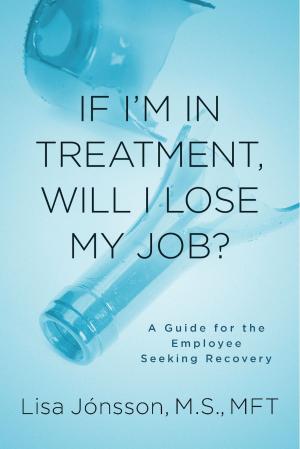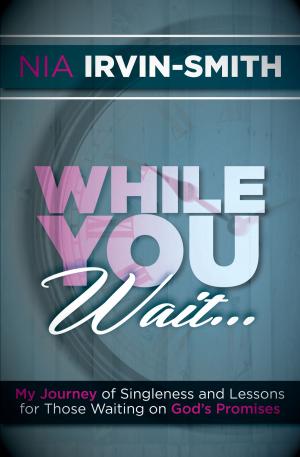Calm, Cool and Collected
A Manual of Stress Management Based on Principle Therapy
Nonfiction, Health & Well Being, Psychology, Mental Health| Author: | John F. Hunchak, M.D. | ISBN: | 9781624884474 |
| Publisher: | BookBaby | Publication: | November 13, 1985 |
| Imprint: | Language: | English |
| Author: | John F. Hunchak, M.D. |
| ISBN: | 9781624884474 |
| Publisher: | BookBaby |
| Publication: | November 13, 1985 |
| Imprint: | |
| Language: | English |
Dear Patient, This book is about learning to cope with stress. Of course, relaxation and various other therapies have already been designed to help people learn to cope with stress. Unfortunately, relaxation tapes, bio-feedback, yoga, and meditation tend to produce tense people who know how to do a relaxation exercise, but these therapies fall short of helping people to become relaxed personalities. They just don’t suit our times. We live in a convenience-oriented, fast-lane society in which we are expected to be always on the go, either working hard or playing hard. In real life, when you feel tense, you can’t say, “Excuse me, I have to go and lie down now and listen to my relaxation tape for twenty minutes.” It’s easier just to pop a pill and forget it. Over the years, I have found that many of my patients don’t feel they can take even two or three minutes off to relax. This book contains relaxation techniques which can be done on the go, while travelling in the fast lane. Other forms of psychotherapy have been largely impractical or not useful for the public. Some forms, like psychoanalysis, have been too time-consuming and expensive. Some forms have been too complicated and difficult to understand. Some therapies solve a specific symptom or problem all right, but in the end, the patient is no wiser, because only the therapist understood the principles that were used. Such a patient will be no better equipped to deal with new problems when they arise. This book is written from the standpoint of principle therapy. A principle is a generality of wisdom or knowledge. This form of therapy is designed to provide you with practical strategies and wisdom to help you deal with life and reduce stress. One good principle is worth a thousand good facts. The principles in this therapy will be useful to solve or resolve the problems you now have. What cannot be cured can be endured. Having learned these principles, you will find them portable, and you will be better equipped to deal with other problems in your life as they arise. The cardinal principle in this book concerns balance. Hunchak’s Principle: The point of maximum stability and function is the point of maximum balance. This principle suggests the main goal of therapy in this book: to establish balance. Establishing balance requires a very significant effort and commitment on your part. Change towards balance is difficult, but it can certainly be achieved, and is worth it in the end. You have only one life to live, and you will get more out of yours if you are balanced. You can think of stress as the sum of all your stresses . Your stresses from your personality, work, marriage, children, relationships, finances, and so on all add up to your grand total of stress. You will never be able to relieve all stress, nor would you want to, because a certain amount is useful. What you want is to reduce your total stress to a comfortable level by reducing each source of stress as much as possible. Relaxation is your key to the potentially good parts of your personality: good feelings, constructive thinking, and useful behaviour. This book is about relaxation in that broad sense. Read this book in sequence from the beginning to the end, because the order of the material is important. It is specifically written for people under stress. I have deliberately excluded philosophical issues of religion and morality. If you have little stress, you may find it difficult to relate to specific sections of the book. For example, if you have work-related stress, you will likely relate to the material in that section; if you have no such stress, you may find that particular section remote. Some of the statements have been provocatively phrased; this is deliberate, and such information needs to be taken in the context of the principle of balance which is developed throughout the text. Be specific in applying the material and follow the instructions. Write things down when suggested, and discuss them with your doctor. You will get the most out of the book that way. To solve whatever problems you have, you will first need to define them clearly. Becoming aware of any problem is half the battle won. Your doctor can sometimes help you with this. Once you/become aware of your problems, you can then move towards a solution or resolution. Lastly, you should know that you are not unique or alone: no matter what problems you have, there are lots of others just like you. If you don’t believe me, ask your doctor! I sincerely hope this book helps you to achieve comfort and peace of mind. When I cover the material in this book with my patients, they often ask, “Why didn’t someone tell me this sooner?” I wrote this book to bring this information to you and the sooner the better.
Dear Patient, This book is about learning to cope with stress. Of course, relaxation and various other therapies have already been designed to help people learn to cope with stress. Unfortunately, relaxation tapes, bio-feedback, yoga, and meditation tend to produce tense people who know how to do a relaxation exercise, but these therapies fall short of helping people to become relaxed personalities. They just don’t suit our times. We live in a convenience-oriented, fast-lane society in which we are expected to be always on the go, either working hard or playing hard. In real life, when you feel tense, you can’t say, “Excuse me, I have to go and lie down now and listen to my relaxation tape for twenty minutes.” It’s easier just to pop a pill and forget it. Over the years, I have found that many of my patients don’t feel they can take even two or three minutes off to relax. This book contains relaxation techniques which can be done on the go, while travelling in the fast lane. Other forms of psychotherapy have been largely impractical or not useful for the public. Some forms, like psychoanalysis, have been too time-consuming and expensive. Some forms have been too complicated and difficult to understand. Some therapies solve a specific symptom or problem all right, but in the end, the patient is no wiser, because only the therapist understood the principles that were used. Such a patient will be no better equipped to deal with new problems when they arise. This book is written from the standpoint of principle therapy. A principle is a generality of wisdom or knowledge. This form of therapy is designed to provide you with practical strategies and wisdom to help you deal with life and reduce stress. One good principle is worth a thousand good facts. The principles in this therapy will be useful to solve or resolve the problems you now have. What cannot be cured can be endured. Having learned these principles, you will find them portable, and you will be better equipped to deal with other problems in your life as they arise. The cardinal principle in this book concerns balance. Hunchak’s Principle: The point of maximum stability and function is the point of maximum balance. This principle suggests the main goal of therapy in this book: to establish balance. Establishing balance requires a very significant effort and commitment on your part. Change towards balance is difficult, but it can certainly be achieved, and is worth it in the end. You have only one life to live, and you will get more out of yours if you are balanced. You can think of stress as the sum of all your stresses . Your stresses from your personality, work, marriage, children, relationships, finances, and so on all add up to your grand total of stress. You will never be able to relieve all stress, nor would you want to, because a certain amount is useful. What you want is to reduce your total stress to a comfortable level by reducing each source of stress as much as possible. Relaxation is your key to the potentially good parts of your personality: good feelings, constructive thinking, and useful behaviour. This book is about relaxation in that broad sense. Read this book in sequence from the beginning to the end, because the order of the material is important. It is specifically written for people under stress. I have deliberately excluded philosophical issues of religion and morality. If you have little stress, you may find it difficult to relate to specific sections of the book. For example, if you have work-related stress, you will likely relate to the material in that section; if you have no such stress, you may find that particular section remote. Some of the statements have been provocatively phrased; this is deliberate, and such information needs to be taken in the context of the principle of balance which is developed throughout the text. Be specific in applying the material and follow the instructions. Write things down when suggested, and discuss them with your doctor. You will get the most out of the book that way. To solve whatever problems you have, you will first need to define them clearly. Becoming aware of any problem is half the battle won. Your doctor can sometimes help you with this. Once you/become aware of your problems, you can then move towards a solution or resolution. Lastly, you should know that you are not unique or alone: no matter what problems you have, there are lots of others just like you. If you don’t believe me, ask your doctor! I sincerely hope this book helps you to achieve comfort and peace of mind. When I cover the material in this book with my patients, they often ask, “Why didn’t someone tell me this sooner?” I wrote this book to bring this information to you and the sooner the better.















